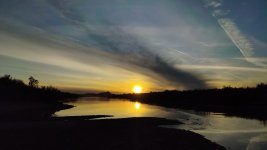
Introduction
Skirting the entire length of the US-Mexico border from December to January, this twenty-two day road trip looped from southern California to Arizona and onward to New Mexico and thereafter down the Rio Grande Valley all the way to the Texas coast. After birding the riches of this area, plus a certain focus on butterflies, the return route swung further north taking in the Albuquerque area before re-entering California. Total kilometres amounted to 10,400 km (6500 miles), though it didn't feel very excessive with most long distance drives done in the evening to avoid losing birding time.
Targets
Basic goal was simply three weeks of excellent birding, primarily revisiting favourite spots in southern Arizona and the lower Rio Grande Valley in Texas, both areas renowned for species typical of Mexico and for harbouring winter rarities. Having missed them on earlier trips however, Montezuma Quail, Scaled Quail, Scott's Oriole, Rufous-backed Robin and Rufous-capped Warbler were high on the priority list.
Additionally, the region also supports impressive numbers of wintering birds from further north, be it assorted passerines or other birds such as Whooping Cranes on the Texas coast, immense flocks of Sandhill Cranes and Snow Geese in both Arizona and New Mexico and, another very much wanted bird, high chances of flocks of the enigmatic Mountain Plovers. All in all, a lot to squeeze into three weeks.
Additionally, I also wanted to focus on butterflies - the lower Rio Grande Valley is the most productive butterfly area in the United States and, even in winter, 50-60 species are possible at a single site.
Skirting the entire length of the US-Mexico border from December to January, this twenty-two day road trip looped from southern California to Arizona and onward to New Mexico and thereafter down the Rio Grande Valley all the way to the Texas coast. After birding the riches of this area, plus a certain focus on butterflies, the return route swung further north taking in the Albuquerque area before re-entering California. Total kilometres amounted to 10,400 km (6500 miles), though it didn't feel very excessive with most long distance drives done in the evening to avoid losing birding time.
Targets
Basic goal was simply three weeks of excellent birding, primarily revisiting favourite spots in southern Arizona and the lower Rio Grande Valley in Texas, both areas renowned for species typical of Mexico and for harbouring winter rarities. Having missed them on earlier trips however, Montezuma Quail, Scaled Quail, Scott's Oriole, Rufous-backed Robin and Rufous-capped Warbler were high on the priority list.
Additionally, the region also supports impressive numbers of wintering birds from further north, be it assorted passerines or other birds such as Whooping Cranes on the Texas coast, immense flocks of Sandhill Cranes and Snow Geese in both Arizona and New Mexico and, another very much wanted bird, high chances of flocks of the enigmatic Mountain Plovers. All in all, a lot to squeeze into three weeks.
Additionally, I also wanted to focus on butterflies - the lower Rio Grande Valley is the most productive butterfly area in the United States and, even in winter, 50-60 species are possible at a single site.







